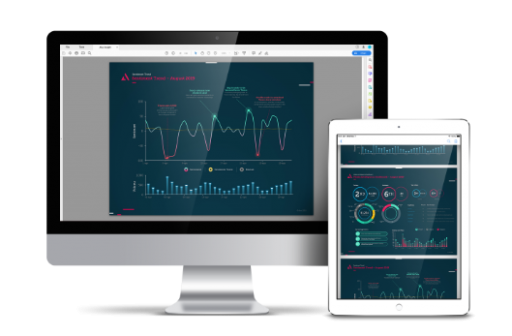New perspectives to understanding climate risk modelling
There’s no denying that the issues surrounding climate change have emerged to sit at the forefront of the global agenda, and this is especially true for big business.
Extreme weather and natural disasters – including wildfires throughout the US and Australia, the recent floods in Pakistan and severe heatwaves that were seen throughout Europe over the summer – make it hard to deny that climate change is happening, and as a result, the impact of climate is here to stay for the long term.
From a business perspective, these climate hazards are especially significant as they pose an ever-greater financial risk to the global economy. As AON’s Weather, Climate and Catastrophe report revealed, last year the economic cost of weather and climate-related events totalled $329 billion. This was the third highest loss on record after adjusting for inflation.
In the past, companies have been good at mitigating risks across many areas by relying on various modelling techniques. But as temperatures continue to rise, the physical climate will see catastrophic disasters that are ever more intense and frequent – and most significantly, impossible to predict using conventional risk management models.
Therefore, companies need to look inward and, with the help of predictive analytics and data using techniques such as climate modelling, they can stress test their own business models in order to build risk resilience and protect their investments, resources and people in the face of these ever-changing environmental conditions.
A whole new world
So, why now? According to Rowan Douglas at the Willis Research Network, up until recently it was “only possible to model and predict broad climate variables, such as mean temperature or precipitation”. However, in recent years models have been developed that simulate the world’s atmosphere, climate and oceans in order to provide a model of the planet that exists in the physical realm. This has allowed scientists to see certain weather events, and even its regional impacts, and thus assessments can be made about the current and future climate. This modelling is of major importance as we are increasingly seeing more severe and frequent climate disasters, leading to a need to better understand climate-related hazards.
As we have mentioned, the advancement of climate risk modelling has the potential to have a profound impact globally and is already starting to move to the frontline of economic and political debate. But one area in particular where its impact is already starting to be seen is in relation to companies, as they attempt to assess the current and future risk of climate change on their businesses. As such, through risk management modelling companies are learning to engage with the available data and use it to attempt to better equip themselves for the future, both from a strategic perspective, but also financially.
To highlight this, according to data published last year by the Task Force on Climate-Related Financial Disclosures (TCFD) – which released guidance for companies to reveal their plans for a transition to net-zero – more than 2,600 organisations support its recommendations globally, revealing that companies are eager to learn how to prepare for climate-related issues.
Selecting the right model
After understanding the damage that unpredictable and varied climate scenarios can cause to the economy as a whole, it is time to consider which global climate model is right for your business in order to mitigate and attempt to navigate the potential harms. There are four primary types of climate models, all of which serve different purposes.
The Numerical Weather Model is perhaps the most well-known model of weather data, as it is used to forecast weather by weather professionals in the media. The Global Climate Model is able to provide both a global and more localised view of climate. It is more complex and relies on mathematical data to examine our major components of climate – oceans, sea ice, atmosphere and land – to predict what it will do over the long term. Catastrophe [CAT] modelling evaluates and manages the risk arising from natural disasters. It uses software algorithms and data to attempt to simulate the potential financial impact that these disasters can bring.
Climate risk models use a combination of the Global Climate and the CAT Model. Although they come with high levels of uncertainty, the employment of different scenarios is extremely useful for companies looking to navigate future climate risks.
Looking inwards
Climate risk modelling involves looking at both the physical and transitional risks of climate change. Companies typically prepare for physical risks such as extreme weather events but neglect to consider that there is still a need to incorporate the severity and trajectory of climate events over a longer period in order to have an accurate risk model.
Transition risks, on the other hand, are risks present in the transformation needed to move to a low-carbon economy. They pose a concern for businesses as the shift to a low-carbon economy could leave companies with stranded assets. As a result, the best operational risk models are those that assess the potential market risk and economic impact of the shift.
How does this work in action?
PwC has used climate risk modelling to help companies in a number of different industries. For one energy company, PwC looked at the impact of carbon price on around 100 generation assets, as well as strategic growth platforms, to reveal the company’s strong transition plan to investors.
For a global communications company, PwC reviewed the short and long-term business risks related to climate change, which included a physical risk modelling assessment for a sample of its strategic assets. This was used to help the company make plans for climate risk management and help integrate climate risks within its existing risk management and business strategies. Meanwhile, a global fertiliser company used modelling to look at how the severity and frequency of disasters in different time horizons and climate scenarios would be affected by climate change, and its potential impact at different sites of the business.
Why should you care?
Although global climate models are traditionally used by academics and insurers, businesses are increasingly making use of the climate science that arises from risk models for strategic decision making – from withstanding the physical impacts of a warmer climate to learning to cope in a low-carbon future. And it goes beyond this, as by engaging with brokers experienced in climate modelling, they can help your company interpret results and from that, determine the right risk management scenario for you to ensure you are as well prepared as possible. After all, forearmed is forewarned.
In the current landscape, where the climate is becoming increasingly unpredictable and there is a need to actively show your business is taking environmental issues seriously, engaging with climate risk modelling is key to success. alva’s Risk Intelligence allows organisations to move from managing risk to anticipating it. Employing horizon scanning, scenario modelling and parametric triggers, it enables the ERM function to identify and verify stakeholder risks across the business.
alva’s Risk Intelligence mines over 390,000 global sources across 123 languages every single day to surface potential risks to your business. Our analysis incorporates all print, online, broadcast, social media, analyst notes, parliamentary records and stakeholder-specific channels to give the richest understanding of emerging threats affecting your company, products, brands, and sector.
Be part of the
Stakeholder Intelligence community









